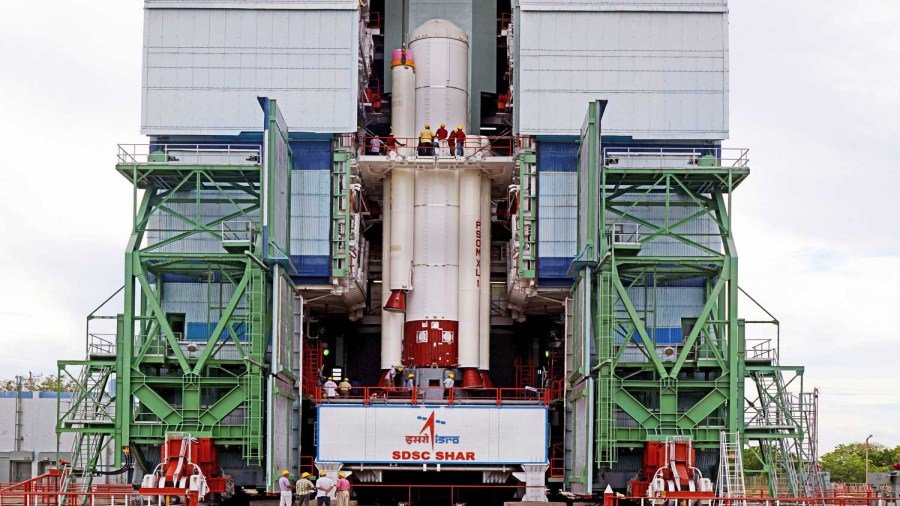The Indian Space Research Organization (ISRO) is all set to launch eight satellites via PSLV-C35 including the one designed exclusively by IIT Bombay students on September 26. The PSLV vehicle will blast off to the skies at 9.12 AM IST (3.42 GMT) from the Satish Dhawan Space Centre, Sriharikota.
Dubbed as PSLV-C35, the whole mission will last two hours and 15 minutes, which will be one of the longest PSLV flights to date. Normally, a PSLV flight injects its payload in orbit after 20 minutes of lift-off but this time, it will take longer because the satellites will be put into two different orbits.
To inject payloads into several orbits during one mission, the engineers will have to shut down and restart the fourth stage of the PSLV rocket, called PS4, twice during the flight. ISRO has already mastered more than once burn technique in the previous two PSLV flights.
The campaign is in full swing for the launch of the PSLV-C35 on September 26. We have planned to release its different payloads at two different orbits this time. This will be a first multiple orbit launch in a single PSLV mission using the PS4 restart method
P. Kunhikrishnan, director of SDSC
ScatSat-1
ScatSat-1 tracks weather and ocean. It is designed to deliver wind vector data for weather forecasting, cyclone detection including tracking services to its users. Touted as a successor to OceanSat-2 mission launched in 2009, the ScatSat-1 studies surface winds and ocean surface strata.
Pratham and PISat
In addition to ScatSat-1, the PSLV-C35 mission features Pratham and PISat box-shaped nanosatellites satellites. Interestingly, Pratham is developed by students of the Indian Institute of Technology Bombay and weights 10 kilograms. The satellite will be used to estimate the total electron count with a resolution of 0.62 x 0.62 mile (1 x 1 kilometer) location grid.
Developed by the People’s Education Society Institute of Technology (PESIT) in Bengaluru, the PESIT Imaging Satellite or PISat, will be mainly used for remote sensing applications. It will obtain imagery of Earth’s surface with a resolution of approximately 262 feet.
AlSat-1B
Manufactured by Surrey Satellite Technology, the AlSat-1B is a medium resolution Earth-observing satellite, based on the SSTL-100 platform. With a weight of 103 kilograms, the AlSat-1B will be used to review agriculture production, the environment and the monitoring of disasters.
AlSat-2B
Designed by Airbus Defence and Space, AlSat-2B is a high-resolution remote sensing satellite with panchromatic and multispectral imaging capability. With a weight of 117 kilograms, the spacecraft will allow Algeria to acquire enhanced high-quality images that could be used in a variety of scenarios such as cartography, management of agriculture, forestry services, the management of natural disasters and land planning.
AlSat-1N
AlSat-1N is a three-unit CubeSat developed by Surrey Space Centre. With a weight of seven kilograms, the nanosatellite will be used to demonstrate new and innovative space technologies.
Pathfinder-1
Pathfinder-1 is a commercial payload developed by Spaceflight Services. Operated by a US-based company BlackSky for three years, the Pathfinder-1 weighs 44 kilograms. Meanwhile, ISRO is gearing up to launch Pathfinder-2 in November 2016.
CanX-7
The PSLV-C35 mission will also carry CanX-7 also called as NLS-19. The satellite has been designed by the University of Toronto and weighs eight kilograms. It will deploy a drag sail to perform experiments to help reduce space debris and also to keep track of commercial aircraft.
ISRO will make use of the 144-foot XL variant of the PSLV and is the upgraded version of the vehicle in its standard configuration. The launch team has added more thrust to the stretched strap-on boosters than on the standard version of the launch vehicle.





1 Comment